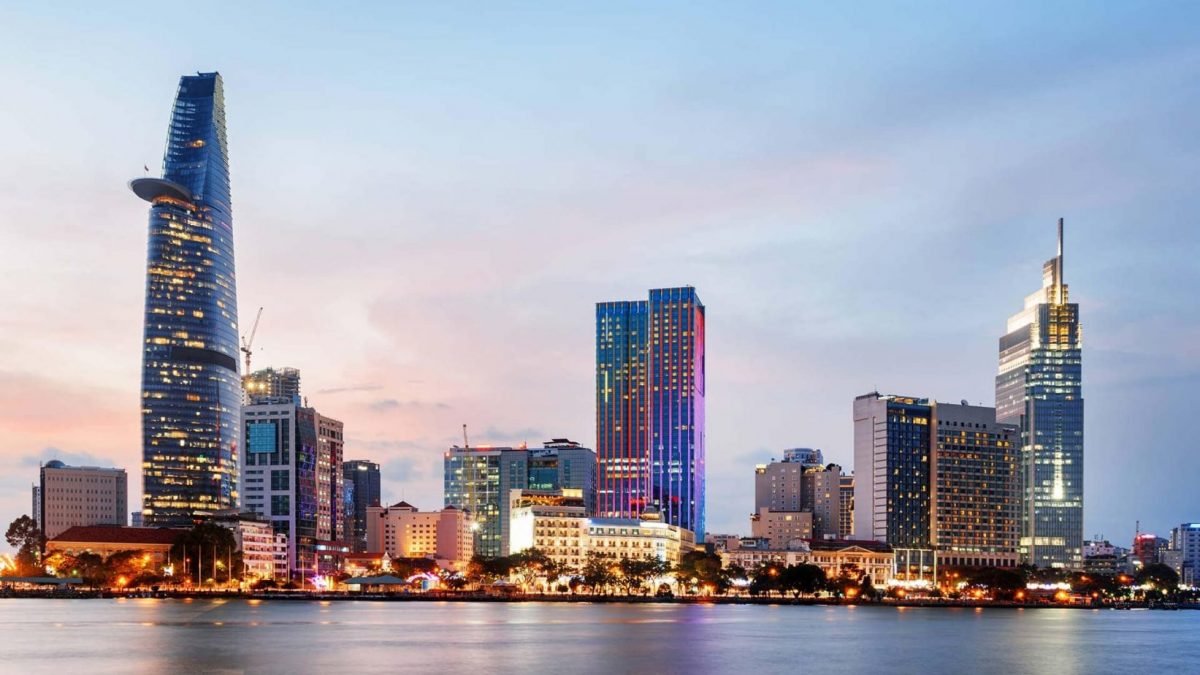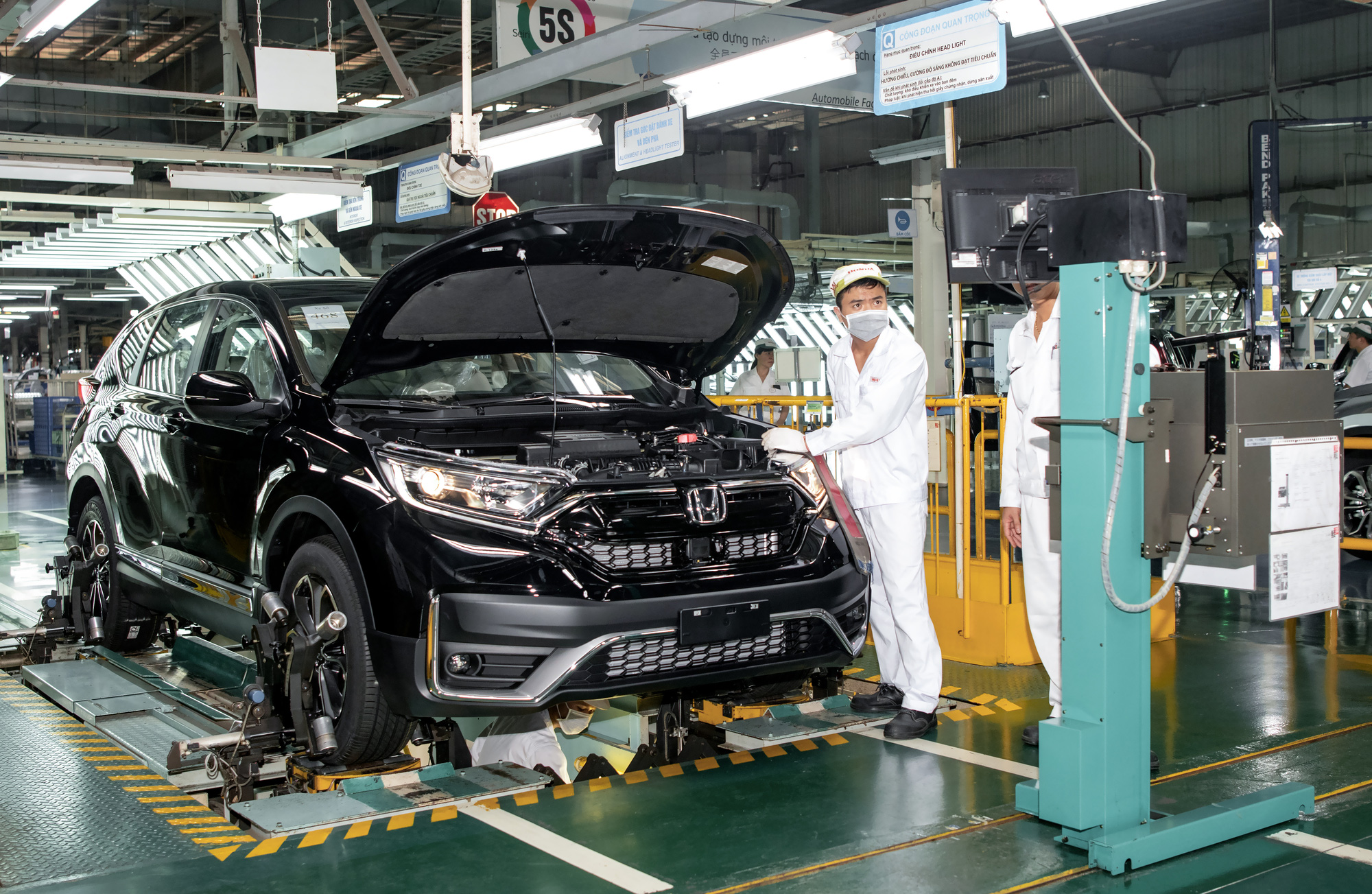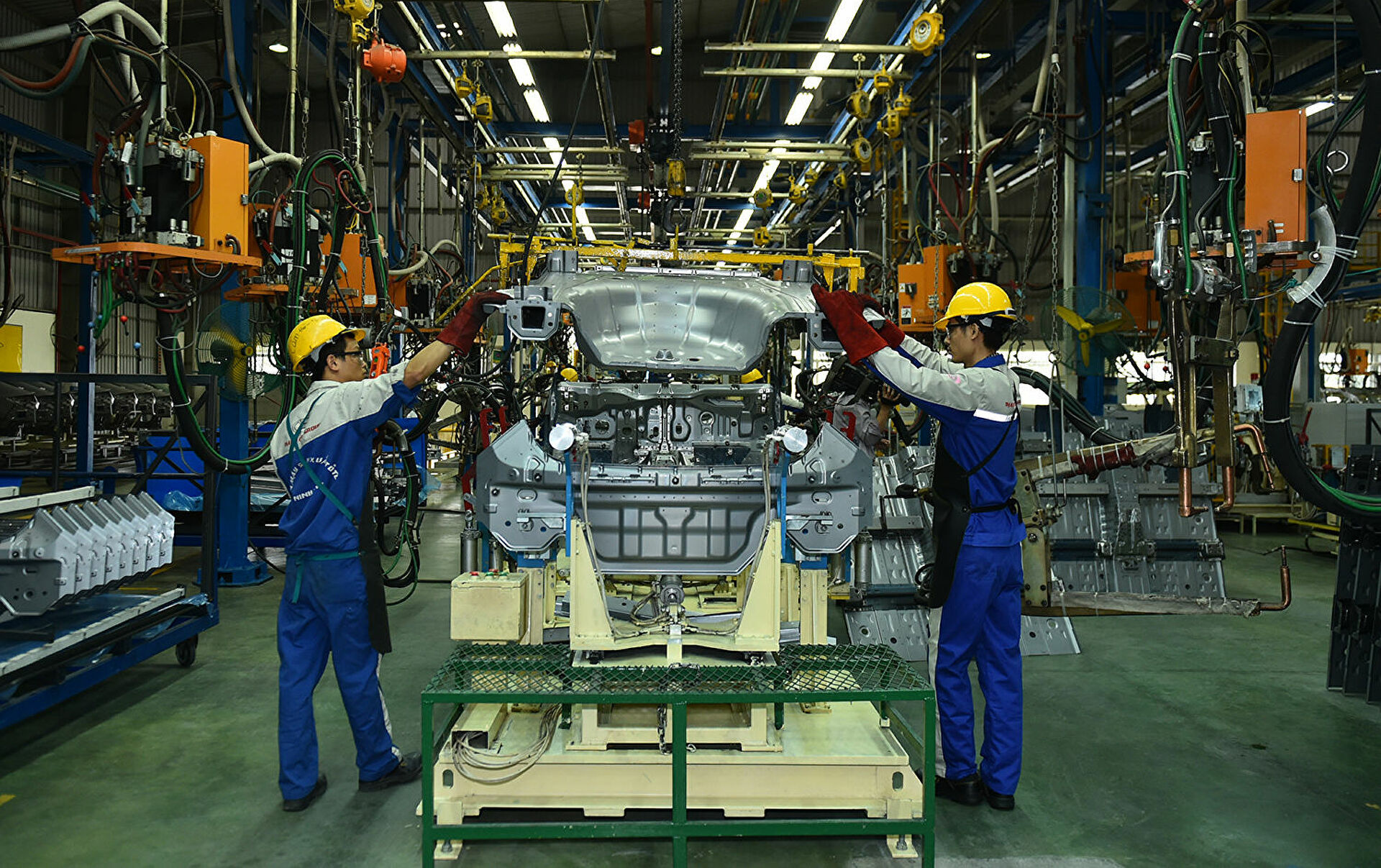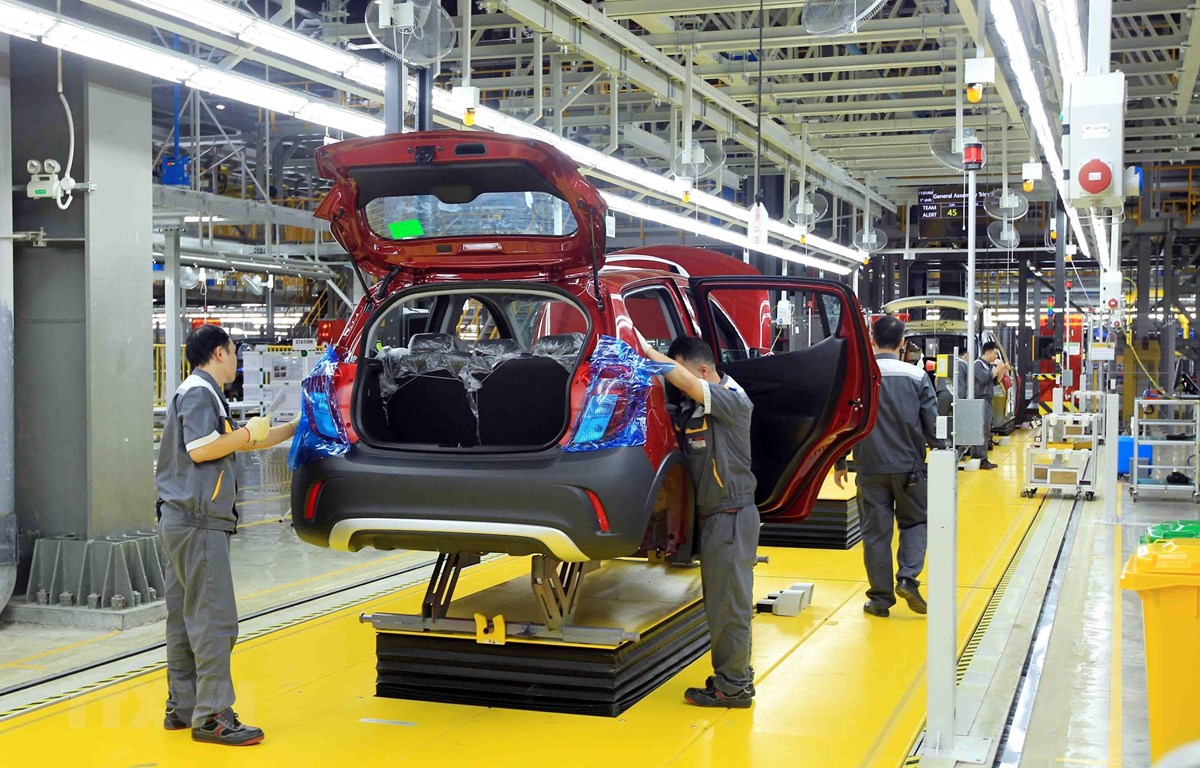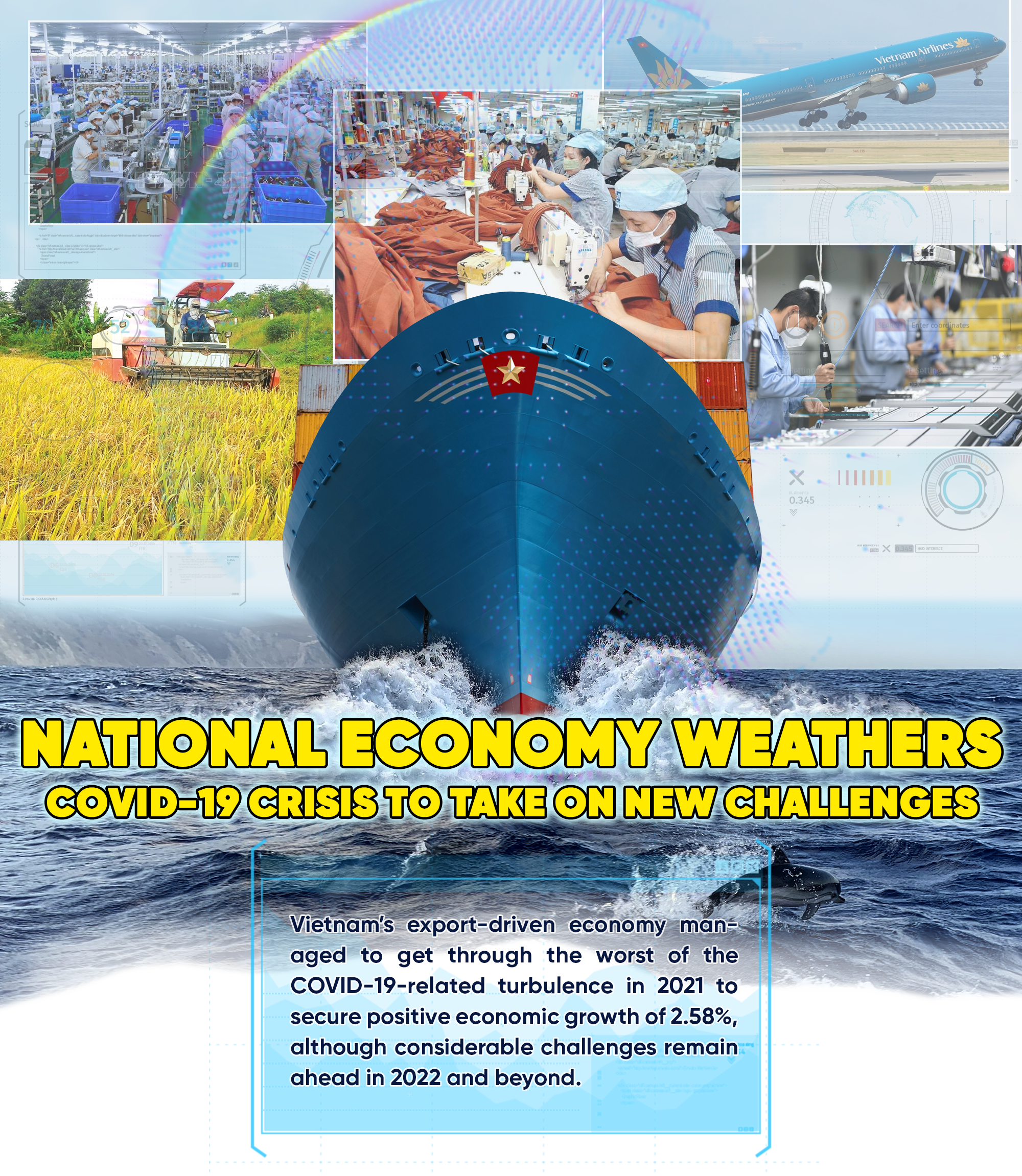

Last year saw the COVID-19 pandemic exert a heavy impact on all economies globally, including Vietnam, causing production and supply chain disruptions. Thanks to a timely and flexible response strategy put in place, the country gradually cushioned the impact of the outbreak and got the economy back on track, obtaining positive GDP growth and maintaining social stability.
By recording an annual trade of more than US$660 billion and achieving a trade surplus of US$4 billion, Vietnam has been named as one of the 20 leading economies in terms of international trade.
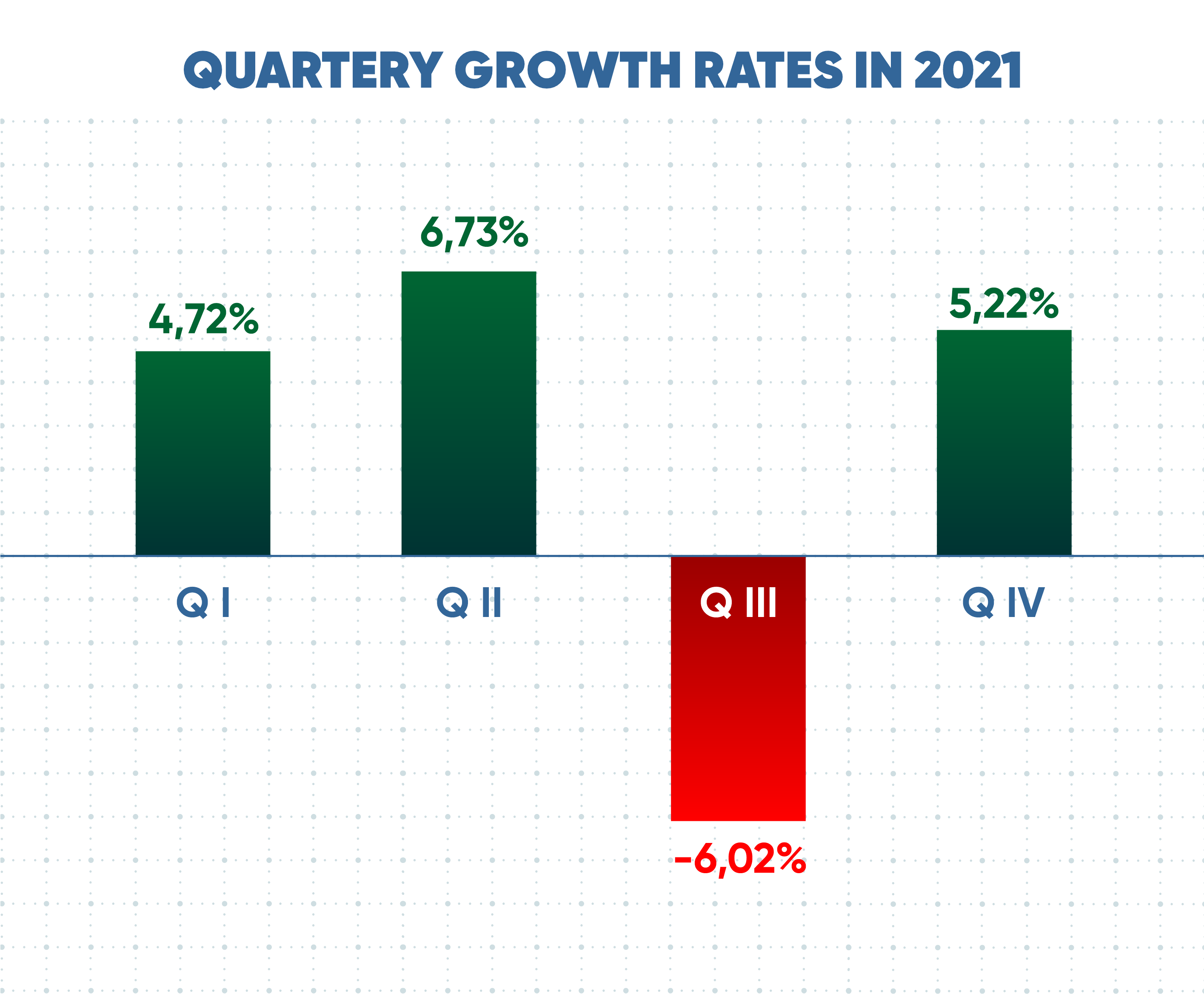
The fourth wave of the COVID-19 pandemic starting in late April prompted localities to adopt various lockdown measures, resulting in a halt to business production, disrupting supply chains, reducing people’s purchasing power, and fueling unemployment.
The Government subsequently held meetings with various ministries, sectors, and localities to seek solutions and sustain the national macro economy. It later changed its zero-COVID policy to the strategy of living safely alongside the virus as a means of removing bottlenecks in business production.
By the end of the year, Vietnam’s annual GDP growth rate fell to a 10-year record low of 2.58%, or 0.33% lower than the previous year’s figure, far below the 6.5% target set by the National Assembly.
“Given the enormous impact of COVID-19, achieving the 2.58% rate is a great success of our economy in combating the pandemic and maintain business production,” says Nguyen Thi Huong director general of the General Statistics Office (GSO).
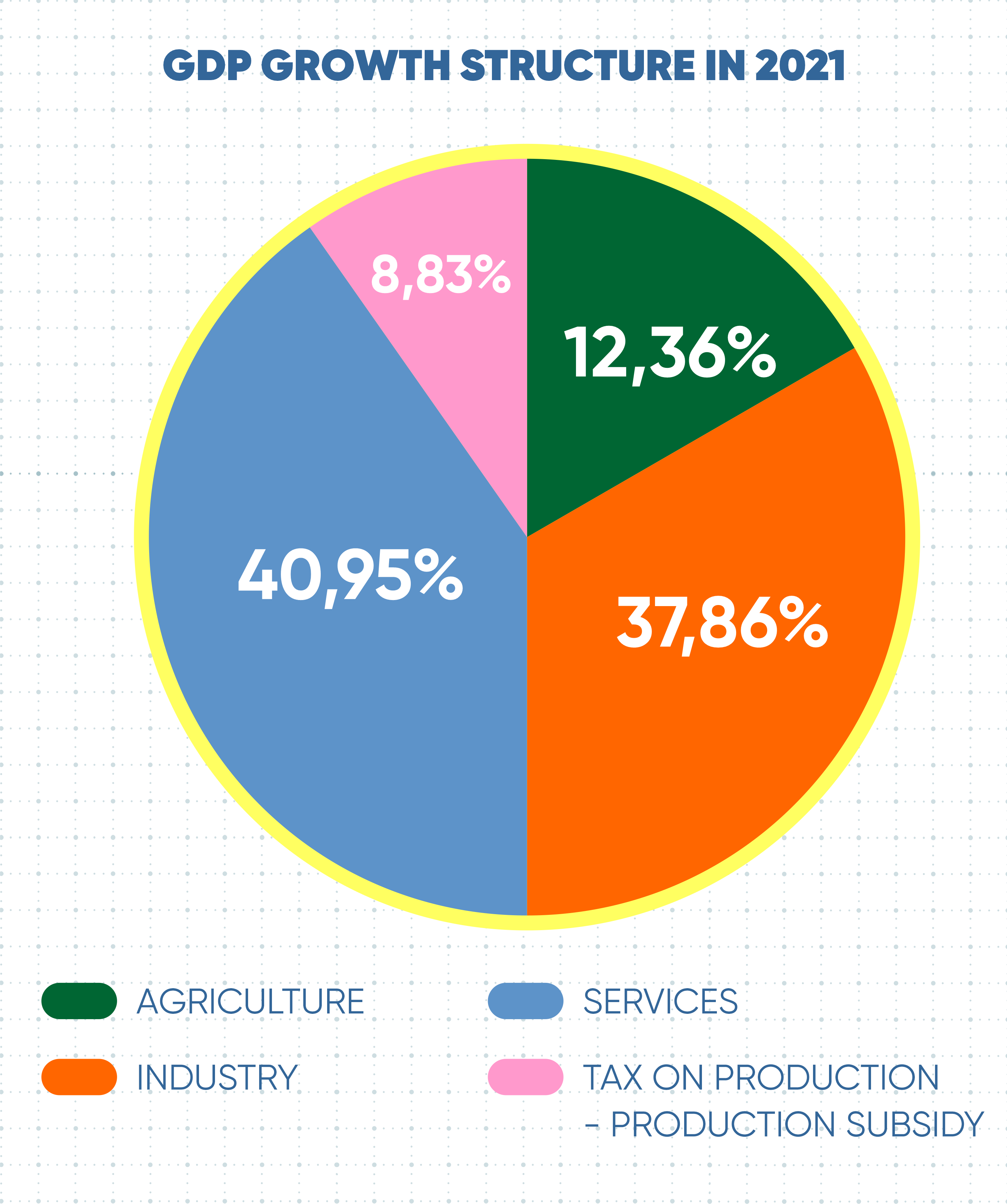
Services made the biggest contribution to the national economy, accounting for two fifths of the country’s GDP. Amid difficulties, agriculture proved to be a solid pillar for the economy, with its export value reaching a record high of nearly US$49 billion, beating the set target of US$42 billion.
Business production also began to gather steam after the policy of living safely with the virus was adopted. The fourth quarter of last year saw 31,400 enterprises established with a registered capital of VND415,300 billion, respective increases of 70.4% and 64.1% compared to the previous quarter. In addition, more than 205,000 employees returned to work, a rise of 24.7% quarter on quarter.
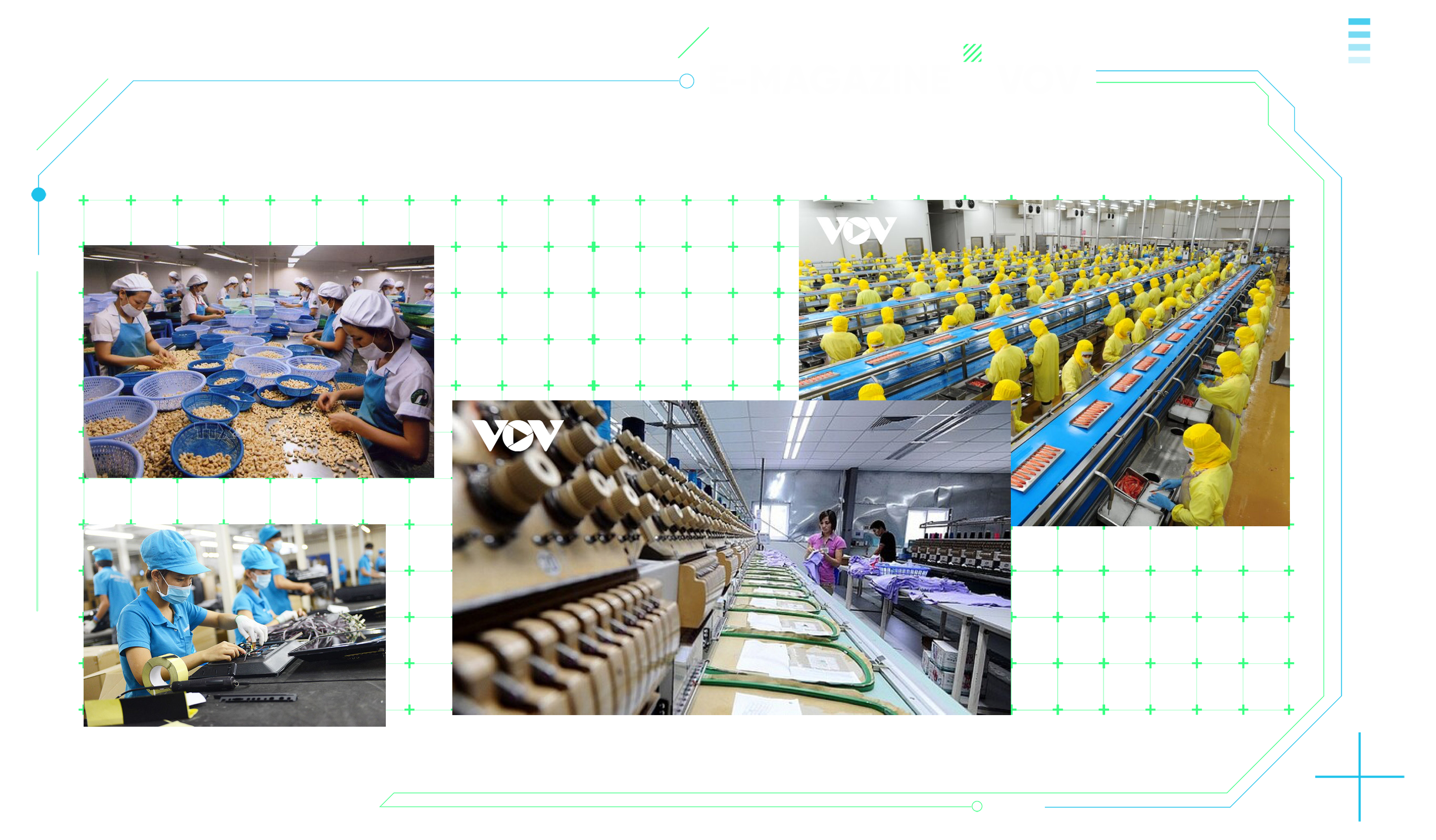
Overall, the entire country saw 116,800 newly-registered enterprises in 2021 with a total capitalisation of VND1.61 quadrillion. The average registered capital of a newly-established firm was VND13.8 billion. In a recent survey conducted by the GSO, 45.6% of enterprises rated the production environment in QI of 2022 as better than QIV of 2021, 36.1% rated it as stable and 18.3% rated it as difficult.
Furthermore, the fourth quarter of 2021 saw domestic trading, transportation, and tourism services gradually return to normal. The total retail sales of consumer goods and services in QIV increased to VND1.3 quadrillion, a rise of 28.1% compared to the previous quarter. In general, the total retail sales of consumer goods and services is estimated to stand at VND4.79 quadrillion for the whole year.


The resurgence of the SARS-CoV-2 virus served to disrupt the global supply chain, negatively impacting Vietnamese import-export activities. This led to experts to fear that the economy’s key targets would not be fulfilled, although those worries were later removed when exports once again came back strong to be a success story at the end of 2021.
The GSO reports that Vietnam raked in US$336.25 billion from exports throughout 2021, up 19% from the previous year, becoming the 22nd largest exporter in the world. Economic experts believe that this upward trajectory will continue into 2022 and will serve to motivate businesses to promote shipments overseas.
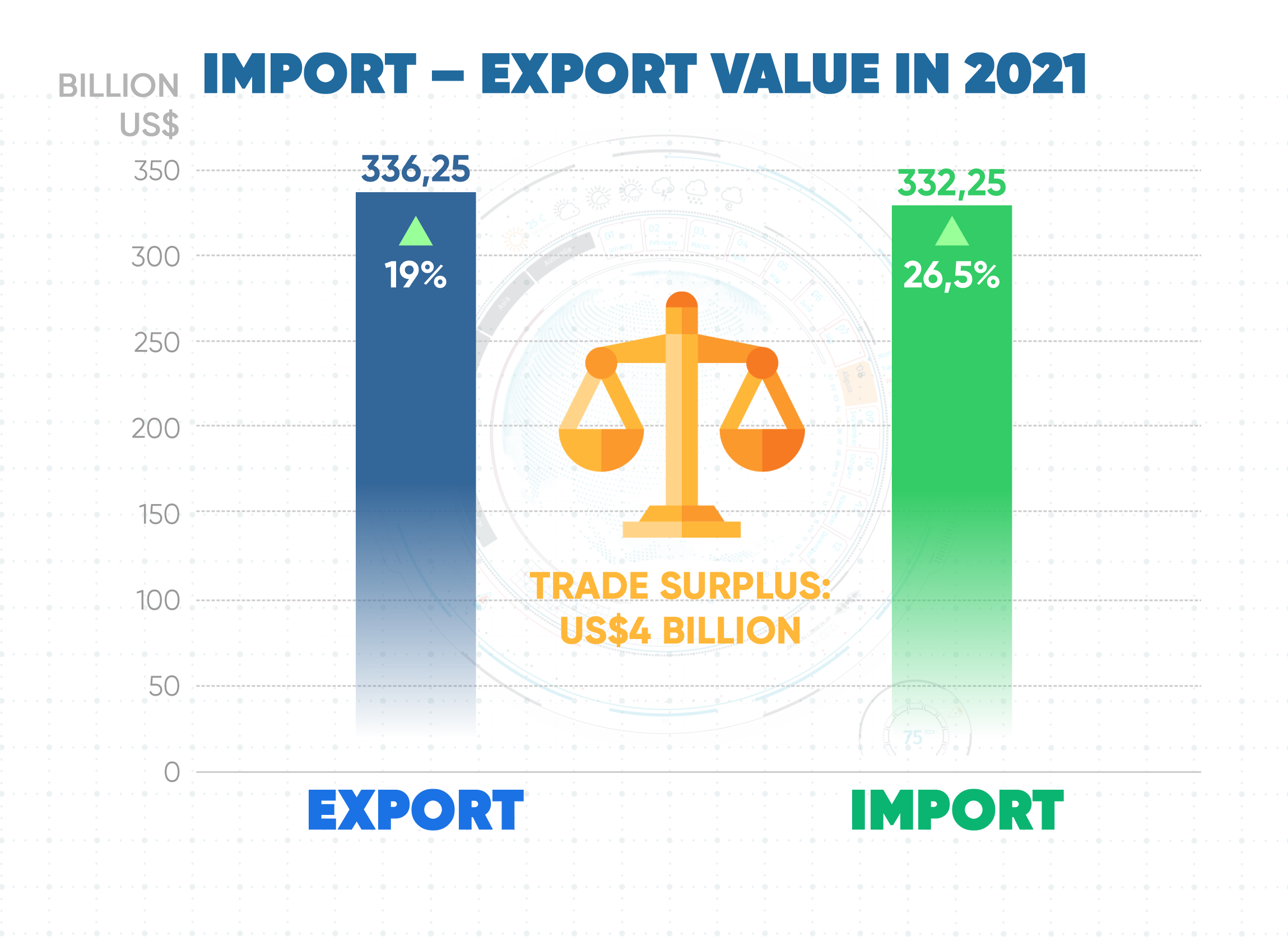
Foreign trade can therefore be considered as one of the brightest points in the overall economic picture for last year, bringing in US$668.5 billion, up 22.6% over the previous year and making the country among the top 20 economies in terms of international trade. Despite the impact of the COVID-19 pandemic, Vietnam achieved a trade surplus of US$4 billion thanks to a US$29.36 billion export surplus contributed by the foreign invested business sector.

The Government’s economic recovery programme has yielded initial encouraging results as business production gradually picked up and services swiftly got back on track, making a significant contribution to budget collection.
The total state budget revenue in 2021 was estimated at more than VND1.5 quadrillion, equaling 113.4% of the annual plan. Of the amount, domestic revenue saw an increase of VND180.1 trillion, or 110.4% of the annual estimate, while revenue from crude oil rose by 197.4% or VND22.6 trillion. The balanced revenue from import and export activities duly equaled 122.1%, or an increase of VND39.5 trillion.
Moreover, other major balances of the economy were successfully maintained in a stable manner, with the average core inflation increasing by 0.81% compared to the 2020 figure. The consumer price index (CPI) inched up by only 1.84% from the previous year and stood at its lowest for five years. The low inflation helped the Government to stabilise the macro-economy and implement financial and fiscal policies which support people, businesses, and the whole economy.

Moving into 2022, many financial institutions and experts have expressed their optimism about bright Vietnamese economic growth prospects moving forward.
In its 2021 Asian Development Outlook update, the Asian Development Bank (ADB) maintained its 6.5% growth forecast for Vietnam. Andrew Jeffries, country director for Vietnam of the ADB, points out that the prolonged COVID-19 outbreak has dealt a heavy blow to the Vietnamese economy due to its large level of economic openness. However, the rapid recovery of several of the country’s major trading partners will help to cushion the impact and promote strong trade.
In addition, Jeffries believes that the high rate of COVID-19 vaccination has created favourable conditions in which Vietnam can look to open its economy, contributing to growth again.

According to the ADB official, as Asia is anticipated to witness a remarkable export recovery in the year ahead, Vietnam needs to make the best use of this opportunity, apart from its 15 signed free trade agreements, to boost exports. Major export items are electronics, components, medical equipment, machinery and equipment, furniture, textiles, and footwear.
Despite these positives, he feels that because the pandemic is unlikely to be contained overnight globally, foreign trade is set to continue to be affected by high transport costs and a general shortage of empty containers into 2023. The pandemic will also accelerate supply chain restructuring worldwide as the trend of rebuilding production networks and diversifying supply partners will continue throughout the year.
Meanwhile, Tim Evans, CEO of HSBC Vietnam, forecasts that the Vietnamese economy is likely to get back to GDP growth of 6.8% in 2022, which will be driven by a return of strong foreign direct investment (FDI) into the market, mainly focusing on the local manufacturing sector. This would serve to benefit Vietnamese exports, especially as free trade agreements that have been signed over the past two years begin to bear fruit.
The continued expansion of the middle class, along with the rising affluent sector, will lead to changes in consumption as local people start spending an increasing amount on leisure and travel.

Infrastructure roll-out will also continue to fuel greater economic activities, especially in the renewable/green arena, particularly given the strong ambitions made by the Vietnamese Government following the recent 26th United Nations Climate Change Conference of the Parties (COP26) in Glasgow, the UK.
“So as 2021 draws to a close, it is time to take a deep breath, believe that the worst really is behind us this time, that Vietnam will resume its economic cadence from 2019. I am informed by my team that given that we are about to start the Year of the Tiger, we can take some comfort from the spirit of the tiger which is – self-belief, willpower, courage and personal strength. All attributes that should serve us well as we rise to the challenges of 2022 and start back on the road to a genuine recovery,” Evans confides.
Although the COVID-19 pandemic remains a complicated matter, particularly following the emergence of the Omicron variant, many economic experts continue to be optimistic about the prospects ahead for the Vietnamese economy in 2022 following the Government’s adoption of the living safely with the virus strategy.
Assoc. Prof. Dr. Dinh Trong Thinh, senior lecturer at the Academy of Finance, says that the 6% to 6.5% GDP growth target set for 2022 by the NA is feasible, but this is also a fairly conservative forecast.
“Given the sound performance of the economy in the last months of 2021, many economists and I myself think that the GDP growth in 2022 could be 7% to 7.5%, even higher,” says Dr. Thinh.
According to the economist, one of the primary growth drivers for the local economy in 2022 will come from foreign direct investment (FDI). While the foreign investment capital in parts of the world showed signs of a sharp decline due to the impact of the COVID-19 pandemic, Vietnamese FDI attraction over the past year remained stable compared to previous years.

“Import and export will continue to be the main growth engine for Vietnam’s economy in 2022, especially when businesses take advantage of opportunities from free trade agreements. In addition, the optimistic 2022 outlook also comes from the rebound of the economy in the new normal,” comments Assoc. Prof. Dr. Thinh.
Echoing Dr. Thinh’s view, Dr. Vo Tri Thanh, director of the Institute for Brand and Competitiveness Strategy, points out that the health of the national economy is gradually improving, but it needs more time to gather full steam.
“After many upheavals, we have grounds to believe the Vietnamese economy will recover well in 2022. They are the consensus of the entire people, experience in fighting the epidemic, a stable macro-economy, and an attractive investment climate, along with the strong recovery of economies that are Vietnam’s main trading partners. In addition, we have strong political will with a sound reform programme,” analyses Dr. Thanh.
However, Dr. Thinh warns that the country should not rest on its laurels as more tough challenges are lying ahead. He believes it is necessary to have a strong leadership who can take prompt, firm, and decisive actions to handle difficulties and seize upon opportunities.







